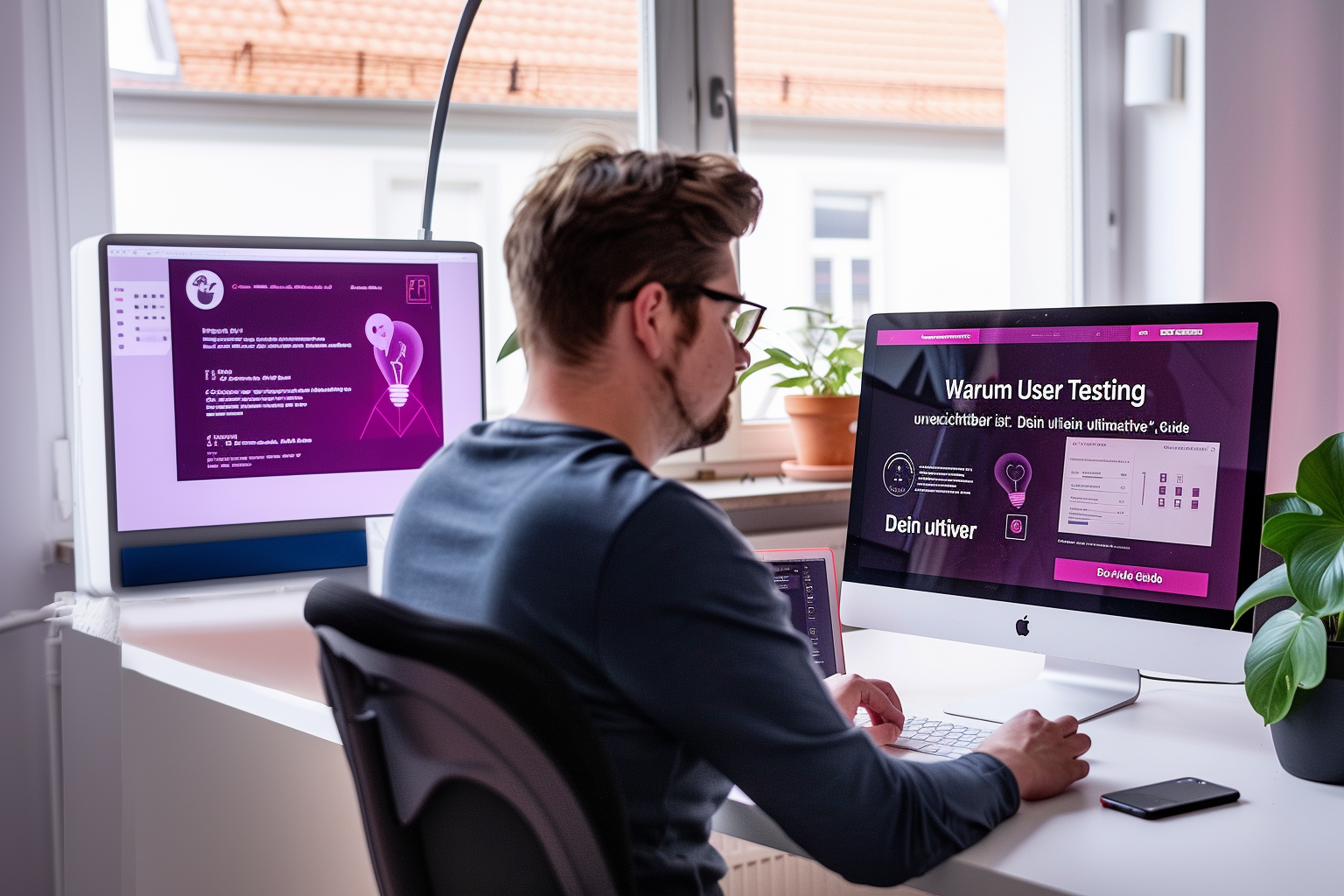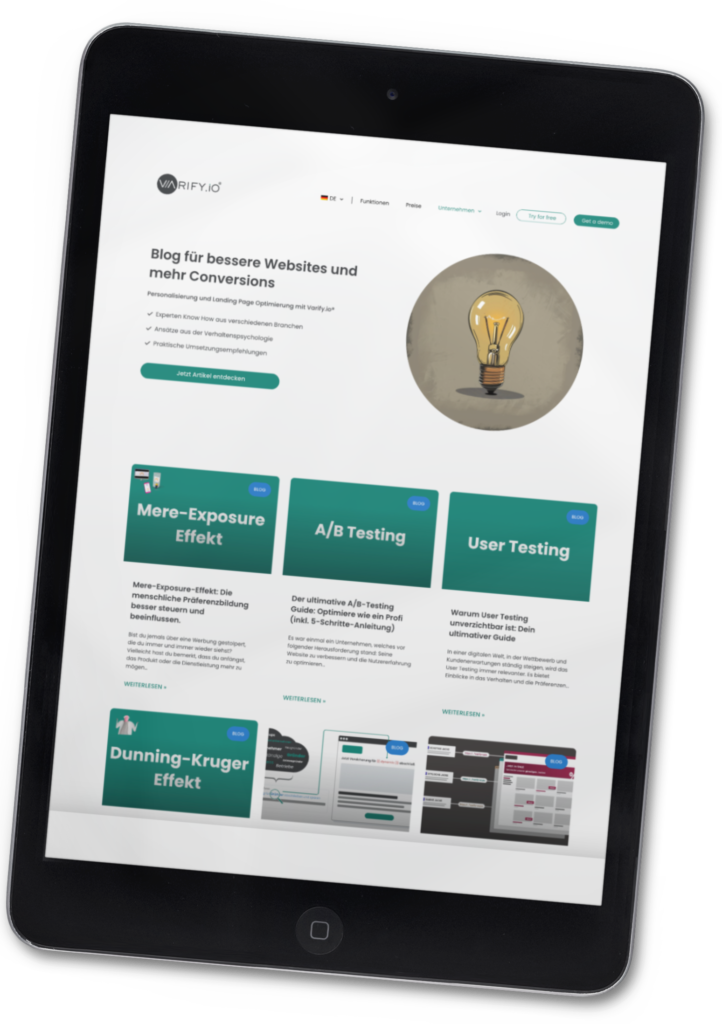
In a digital world where competition and customer expectations are constantly increasing, user testing is becoming more and more relevant.
It provides insights into user behavior and preferences, which is essential for developing products that are both user-friendly and commercially successful.

What exactly is User Testing?
User testing, often referred to as user testing, refers to the process of asking real users to use a product or service, providing feedback on their experience. This is usually done in a controlled environment and under specific scenarios or tasks. The idea is to find out how actual users interact with the product and where possible weaknesses or areas for improvement lie.
It's not just about pure functionality, but also about the overall user experience. How does the user feel? Is he satisfied or frustrated? Where are there possible hurdles, and how could they be overcome? These questions are the focus of user testing.
Types of user testing
The field of user testing is diverse and has undergone an evolution in recent years. Here are some of the most common testing methods:
Usability testing
A conversion is the successful completion of a desired action by a website visitor. A simple example is the purchase of a product in an online store, but filling out a form or watching a video can also be counted as a conversion.
A/B tests
This method compares two variants of a website or app. The aim is to find out which variant performs better in terms of a specific metric, e.g. click-through rate or sales.
Remote User Tests
An increasingly popular method, especially in today's digitally connected world. Users can test from their own location. This saves costs and time and often delivers more authentic results, as the testers are in their familiar environment.
Session Records
This involves recording user interactions in real time. This allows companies to closely track the user's journey through their website or app and identify any problem areas. Here, one should strictly follow correct
The process of user testing: step by step
The success of a user test depends heavily on its preparation and execution. Here is a detailed breakdown:
1. planning and preparation:
First, it must be clear what exactly is to be tested. Is it new features? An entire redesign? Or specific problem areas that are already known?
2. recruitment of testers:
Selecting the right testers is crucial. Ideally, they should represent the actual target group of the product.
3. test execution:
Depending on the type of test, this can be done in a specialized laboratory, at the company's office, or remotely. It is important to have a neutral test environment in which the participants feel comfortable.
4. feedback collection and analysis:
After the test, the results are analyzed. What were the most common problems? Where did everything go smoothly? What changes are necessary?
Tips and tricks for successful user testing
- Clear Instructions, but enough freedom: It is essential to give the testers clear instructions so that they understand exactly what tasks they are supposed to perform. But it is equally important to give them the freedom to experience the product or service in their own way. This creates a balance between structured investigation and spontaneous, genuine reactions.
- Modern tools are indispensable: Technology has advanced significantly in recent years, and there are numerous software tools designed specifically for user testing. These tools can cover everything from managing testers to recording their interactions and provide deeper insights into user behavior.
- Maintain objectivity: It's tempting to look for confirmation of what you already think you know. However, user testing should be done as objectively as possible to get real, unbiased feedback.
Common stumbling blocks in user testing
The number of testers makes all the difference: A larger group of testers often gives a more complete picture. It provides a more comprehensive overview of different user types and their individual reactions.
Target group-specific tester selection: Demographics play a significant role in user testing. A senior might have difficulty with an app that is perfect for a teenager. Therefore, it is crucial to select testers that match the intended target audience.
Uninfluenced feedback: It is of utmost importance to ensure that testers have no preconceived notions or information about the product before testing it. This ensures unbiased and honest feedback.
The future of user testing
Technology is evolving rapidly, bringing with it ever new opportunities for user testing. Virtual reality, for example, offers a whole new level of immersion, while eye-tracking technology allows us to see exactly where a user is looking, providing valuable information about their priorities and interests.
Final thoughts
User Testing is much more than just a tool - it is a central part of the development process. It allows us to empathize with our users and constantly adapt and improve our products. Those who use this tool skillfully and integrate the results into product development will ultimately triumph in the digital space.
